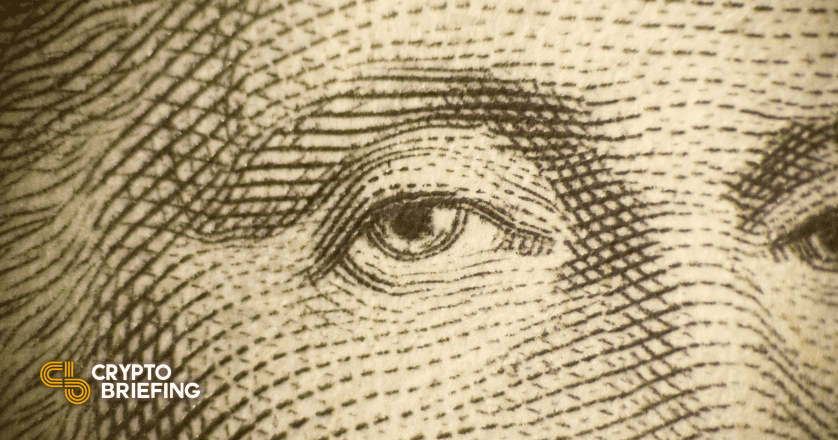Daily Briefing: Dollar Dominance
The dollar index has gained despite the U.S. economy suffering from a slump.

Key Takeaways
- The dollar's dominance has risen as the Federal Reserve has hiked interest rates.
- Rate hikes should eventually hurt the dollar's value.
- Cryptocurrencies like Bitcoin and Ethereum could continue to suffer from extended rate hikes.
Share this article
Tim Craig unpacks the dollar’s recent surge.
The Dollar Index Rally
Many things in the world of crypto and finance seem paradoxical from the outside. Tokens can experience “bullish unlocks” where the price appreciates despite the circulating supply increasing. Then there’s backwardation, an event where futures contracts trade at a discount to spot but can often indicate a bullish bias. And a national economy that’s technically in decline can, confusingly, find its currency getting stronger by the day.
While each of these phenomena could easily warrant its own article, today I’m going to focus on the last one. We’ll take a look at the rising dollar currency index, why it’s showing such insane strength, and what it means for crypto and risk assets going forward. Let’s dig in.
Since the Federal Reserve started raising interest rates in March, the dollar index has steadily gained value. Taking the rate raise in isolation, it’s not difficult to understand why. America’s reserve bank increased the risk-free rate for the first time in three years, so it’s no wonder demand for the dollar also jumped. However, in recent months, subsequent, larger rate raises designed to combat rising inflation have made the situation a lot more complicated.
The main effect of raising rates is that it increases borrowing costs and thus slows economic growth. If it costs more in interest to borrow dollars, many businesses will think twice about doing so to expand their operations. Others will find their margins difficult to maintain under the new monetary policy and reduce their spending. The end result is a slowdown in economic activity, which should, in theory, slow demand and bring asset inflation back to more manageable levels.
This is where the paradox comes in. Slowing down economic growth hurts the U.S.’s tax revenue. If companies are making less profit, then there’s less for the government to tax, reducing its income and potentially resulting in the Fed having to issue more debt to the Treasury. As the value of a country’s currency depends on its ability to repay its debts, anything that negatively affects its ability to do so should devalue it, shouldn’t it?
Over a long enough time frame, raising rates will weigh heavily on the economy and should eventually start to devalue the dollar. But in the short term, while the dollar still acts as the world’s reserve currency, demand can, and will, increase as other places for people to park their wealth—such as traditional equities—lose value.
So what does this all mean for crypto? If the market continues to treat Bitcoin and Ethereum as risk assets, they will have a hard road ahead. The Fed will have to pivot away from its current economic tightening at some point, but it could take longer than expected if inflation remains high. If you’re outside the U.S., it might be prudent to start holding your money in dollars if you expect macroeconomic conditions to worsen.
But remember, the Fed will have to pivot eventually if it doesn’t want the entire U.S. economy to implode, regardless of whether inflation has reached its target or not. And when it does, we can expect the dollar to drop, and risk assets like crypto will have a chance to shine again.
Disclosure: At the time of writing, the author of this piece owned ETH and other cryptocurrencies.
